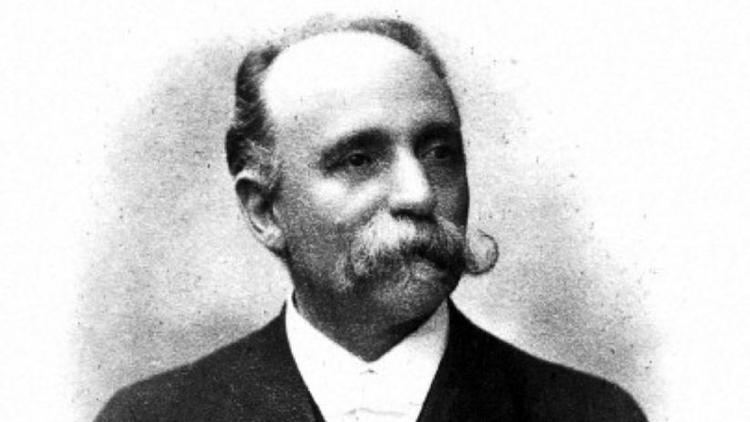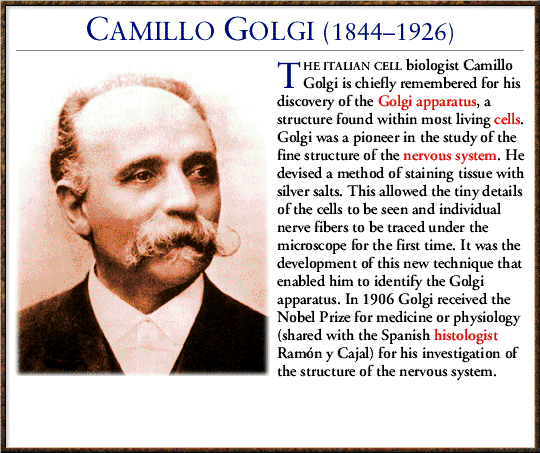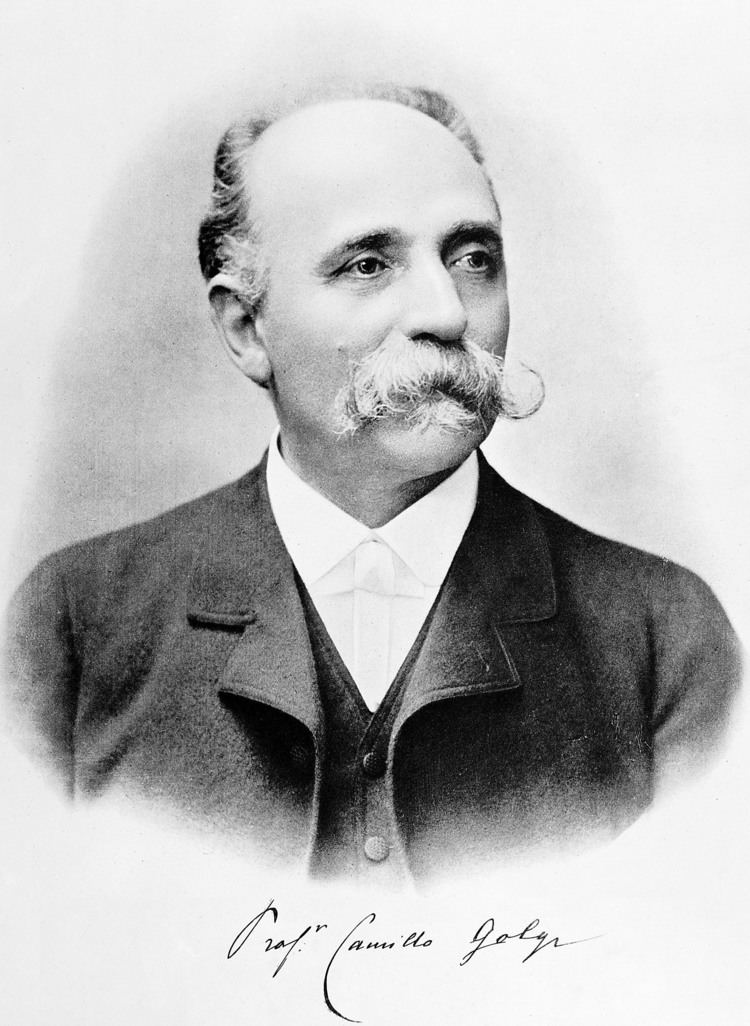Name Camillo Golgi Nationality Italian Role Physician | Spouse Lina Aletti (m. 1877) | |
 | ||
Parents Alessandro Golgi, Carolina Golgi Similar People Santiago Ramon y Cajal, Jean Cruveilhier, Cesare Lombroso, Paul Ehrlich, Marcello Malpighi | ||
Camillo Golgi | Wikipedia audio article
Camillo Golgi ([kaˈmillo ˈɡɔldʒi]; 7 July 1843 – 21 January 1926) was an Italian physician, biologist, pathologist, scientist, and Nobel laureate. Several structures and phenomena in anatomy and physiology are named for him, including the Golgi apparatus, the Golgi tendon organ and the Golgi tendon reflex. He is recognized as the greatest neuroscientist and biologist of his time.
Contents
- Camillo Golgi Wikipedia audio article
- Camillo golgi nobel medicina
- Biography
- Monuments in Pavia
- Eponyms
- References

Camillo golgi nobel medicina
Biography

Camillo Golgi was born in July 1843 in the village of Corteno, in the province of Brescia (Lombardy), Italy. The village is now named Corteno Golgi in his honour. His father was a physician and district medical officer. Golgi studied at the University of Pavia, where he worked in the experimental pathology laboratory under Giulio Bizzozero, who elucidated the properties of bone marrow. He graduated in 1865. He spent much of his career studying the central nervous system. Tissue staining techniques in the later half of the 19th century were inadequate for studying nervous tissue. While working as chief medical officer in a psychiatric hospital, he experimented with metal impregnation of nervous tissue, using mainly silver (silver staining). He discovered a method of staining nervous tissue that would stain a limited number of cells at random in their entirety. This enabled him to view the paths of nerve cells in the brain for the first time. He called his discovery the "black reaction" (in Italian, reazione nera), but today it is called Golgi's method or the Golgi stain. The reason for the random staining is still not understood.

The black reaction consisted in fixing silver chromate particles to the neurilemma (the neuron membrane) by reacting silver nitrate with potassium dichromate. This resulted in a stark black deposit on the soma as well as on the axon and all dendrites, providing an exceedingly clear and well-contrasted picture of neuron against a yellow background. The ability to visualize separate neurons led to the eventual acceptance of the neuron doctrine. However, Golgi himself was led to a conviction that nervous system is a single network, not of separate cells; the notion called "reticular theory." He supported this discredited theory even in his Nobel lecture.

In addition to this discovery, Golgi discovered a tendon sensory organ that bears his name (Golgi receptor). He studied the life cycle of Plasmodium and related the timing of tertian and quartan fevers seen in malaria with the life cycle of the organisms now named Plasmodium vivax and Plasmodium malariae, respectively. Using his staining technique, Golgi identified the intracellular reticular apparatus in 1898 which bears his name, the Golgi apparatus.

In renal physiology Golgi is renowned for being the first to show that the distal tubulus of the nephron returns to its originating glomerulus, a finding that he published in 1889 ("Annotazioni intorno all'Istologia dei reni dell'uomo e di altri mammifieri e sull'istogenesi dei canalicoli oriniferi". Rendiconti R. Acad. Lincei 5: 545–557, 1889).
Golgi, together with Santiago Ramón y Cajal, received the Nobel Prize in Physiology or Medicine in 1906 for his studies of the structure of the nervous system. In 1900 he was named senator by King Umberto I. In 1913 he became foreign member of the Royal Netherlands Academy of Arts and Sciences.
Golgi was irreligious in his later life and became an agnostic atheist. One of his former students attempted an unsuccessful deathbed conversion on him.
Golgi died in Pavia, Italy, on 21 January 1926.
Monuments in Pavia
In Pavia several landmarks stand as Golgi’s memory.
